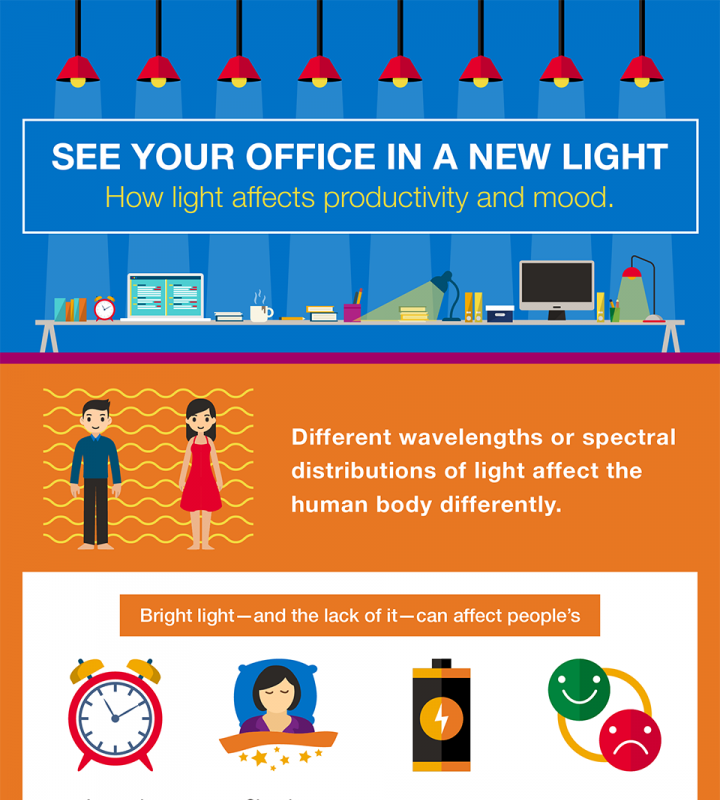Sales, Marketing and Social Can Be More Successful: hint – it’s not about your content
Sales, marketing, and social marketing attempt to place solutions and create relationships by supplying great content, discovering likely prospects, and creating trust. Unfortunately sellers end up closing a small fraction – less than 5% – of those they reach, and marketers and social end up closing even less. Our products are terrific. So what’s causing our failure?
Problems With Our Current Thinking
Here’s a bit of flawed thinking that exacerbates the problems:
- Sellers believe prospects are folks who SHOULD buy (those with a ‘need’) rather than those who WILL buy (those who achieve consensus and set up a way to manage any change a purchase involves, and are ready and able to buy regardless of urgency of need).
- Marketers believe that content is king, that offering the right content at the right time enables a buying decision. But we don’t know the role the reader plays on the Buying Decision Team, how or when our content is being used, and if it’s making a difference in the buying decision (i.e. it might be just a resource);
- Social believes that by engaging in relationships over time and developing trust, followers will come back when they are ready. But because we can’t know their decision path, or associates who need to buy-in to any change, or internal political issues, we can’t know if we are spending time wisely.
We can facilitate buying decisions by employing different thinking to avoid:
- Merely guessing at, or manipulating, our conversations or offerings without knowing where along their decision path our buyers are, and how many of their Buying Decision Team are on board;
- Playing a numbers game to find and pitch those with a supposed ‘need’, assuming our content persuades buyers to buy or take action;
- Neglecting possible actions that can facilitate a buyer’s off-line decision steps.
It’s time to add some new thinking to what we’re doing.
What I Learned In The Trenches
By focusing on placing solutions, we’re missing the first 9 specific steps in a 13 step buying decision path that have nothing to do with our solution:
- People have complicated issues (personal, systemic, organizational, and all criteria-based) to handle before they can buy or change. They only buy when all issues are managed regardless of need (systems congruence trumps need);
- Buying includes change; change means disruption; consensus helps manage the disruption before it’s a problem; each person involved brings unique criteria and voice and shifts the buying criteria (i.e. until the entire Buying Decision Team is formed, weighs in, and agrees, there is no way to accurately define ‘needs’).
- Given politics, internal relationship issues, history and future, it’s challenging, but necessary, to design a route through to change (in this case a purchase) that includes the people, rules, relationships, and group outcomes to avoid resistance and fallout.
I learned this as both a sales person and an entrepreneur. When Merrill Lynch hired me a stockbroker in the 1970s, I became a million-dollar producer my first year. But I couldn’t figure out why everyone with a need (especially those I had a great relationship with) didn’t always buy what I thought they needed. Where did they go?
When I started up my tech company in London in the 80s I realized the problem: as a buyer myself, my direct needs were often superseded by the social, political, organizational, and relational considerations I had to manage. When sellers came to pitch they worked hard to understand my needs in the area their solution served, and gave fine pitches, but as outsiders had no way to handle or understand the fights I was having with the Board, or the issues the distributor was having with their sales force. Nor did anyone even try.
The sales model, I realized when faced with great pitches and lovely sales folks, was not designed facilitate the behind-the-scenes non-need-related issues I had to manage before I could buy anything. I realized that all the great content, all the lovely relationships, all the ‘needs’ I had that matched their solutions, were worthless if I couldn’t manage the off-line, ‘Pre Sales’ issues that would be involved if I purchased anything. So, “Yes” to need; “No” to Buyer Readiness. And the sales model has no skills that address this problem because it is personal, idiosyncratic, and systems-based, and lie outside of the focus of placing solutions. I’ve heard it said that 80% of buyers you’re following now will buy a similar product (not yours) within 2 years of your connection; that’s the time it took them to make decisions that wouldn’t disrupt – the time of the sales cycle.
I then developed a facilitation approach (Buying Facilitation®) for my own sales team to add to the front end of the sales model to first facilitate Buyer Readiness – the steps buyers would have to take internally anyway and without Buying Facilitation® take a helluva lot longer. My team then added a new focus, and entered conversations as change management facilitators first, then selling when/if buyers were ready (more were ready, and much, much quicker, with no chasing around and we were able to disengage very early from those who could never buy.). After all, until they were able to determine if they COULD buy (and still maintain systems congruence) they could never be buyers regardless of need (the reason folks with a real need don’t buy). I continue to pose this question: do you want to sell? Or have someone buy? They are two different activities, and the sales model only handles the sales end; the buying end is change management.
Rule: the time it takes buyers to manage their off-line, idiosyncratic change issues is the length of the sales cycle. We were then able to get onto the Buying Decision Team early, lead buyers quickly through their unique decisions, and became great relationship managers, not to mention servant leaders. Our sales tripled and the time to close was reduced by two thirds; our relationships with clients were cemented and we avoided competition and price issues.
The takeaway here for marketers and social is the recognition that we are largely ignoring the hidden, systemic issues going on within our buyers’ environments that are not available to outsiders yet fundamental for any change to happen. We keep pushing content, hoping and praying that it will reach the right people at the right time. So long as we continue to focus on solution placement, we lose sales that we needn’t. That is our Achilles Heel. And it doesn’t have to be.
What’s The Role Of Change Management?
Buyers and followers don’t know their journey to change when they begin and hence take longer than necessary to figure it out. But figure it out they must. And we can help them, and make our value proposition our ability to be their GPS, so long as our focus is to facilitate change, not push or manipulate to make a sale. Plus, it’s an entirely different skill set.
There are two elements of Buying Facilitation® that can be added to create a ‘pull’ that’s change- and decision-focused.
- Enter as a change facilitator. Instead of coding, noticing, tracking details that will help us guess at who’s reading, who’s a decision maker, where they might be in their sales cycle, etc. let’s begin listening for, and designing, tools that facilitate each step of the movement along the decision path that change decisions goes through; let’s ensure they discover the right people to be involved (some not so obvious) and help them build the necessary internal consensus. Currently we now listen for what we want to hear rather than listening for issues with decision making, change or choice. I’ve developed a new way to listen (Listening for Systems) that is non-biased.
- Guide buyers through change management at the start of the sales process. Regardless of the type or size of the solution, buyers cannot buy until they are ready internally, and sales doesn’t have tools to focus to handle systemic change management without bias. Facilitative Questions are a type of criteria-recognition tool that facilitates thinking using Servant Leader thinking. Conventional questions are biased in favor of the seller; Facilitative Questions are biased in favor of the buyer.
It’s possible to develop assessments, questionnaires, intelligent contact sheets, CRM tools that enter in the right place along the decision path, provide the capability to lead buyers and followers through the full complement of steps they must take, making it possible to send out just the appropriate data at the right point in the cycle, and facilitate the consensus and buy-in as they quickly ready themselves for change. We can add these to the sales, marketing, and social models to truly serve our buyers and followers and close more. It will be an addition, and the results will stronger relationships and more conversions.
The problem has never been your solution; the problem is that we overlook the idiosyncratic stages of Buyer Readiness that are not involved with using our solutions – helping buyers address their unknowable change issues (independent of need, and based on people, rules, relationships, history, etc.) so they can get their ducks in a row to buy anything. By adding a facilitation tool directed at managing change before we try to sell, we can find more clients, and sell more, faster. And we can become true servant leaders.
About the Author


 An organization’s culture – its commonly shared values and beliefs – is both highly complex and interrelated. As such, no one cultural artifact should be used in isolation to describe an organization’s culture and each artifact contributes differently to the painting of the overall culture picture. Objectively viewing the collection of cultural artifacts and identifying their individual contribution significance is critically important to developing an accurate understanding of the organization’s culture.
An organization’s culture – its commonly shared values and beliefs – is both highly complex and interrelated. As such, no one cultural artifact should be used in isolation to describe an organization’s culture and each artifact contributes differently to the painting of the overall culture picture. Objectively viewing the collection of cultural artifacts and identifying their individual contribution significance is critically important to developing an accurate understanding of the organization’s culture.
 Author, change agent and leadership trainer, Greg Wallace is CEO of The Wallace Group which consults organizations and leaders to implement change and transformation which produce results that meet the leader’s definition of success. Learn more about developing a personal model of leadership in his second book, “Transformation: the Power of Leading from Identity”.
Author, change agent and leadership trainer, Greg Wallace is CEO of The Wallace Group which consults organizations and leaders to implement change and transformation which produce results that meet the leader’s definition of success. Learn more about developing a personal model of leadership in his second book, “Transformation: the Power of Leading from Identity”.
 Eugene Feygin is a Program Manager at
Eugene Feygin is a Program Manager at  John Montana has been a successful salesman since 1990. He currently lives with his wife and travels between Chicago and Los Angeles. He created his site –
John Montana has been a successful salesman since 1990. He currently lives with his wife and travels between Chicago and Los Angeles. He created his site –